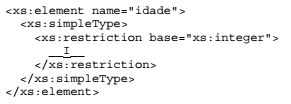Questões de Concurso
Para analista judiciário - análise de sistemas de informação
Foram encontradas 398 questões
Resolva questões gratuitamente!
Junte-se a mais de 4 milhões de concurseiros!
Nesse pensamento, o autor utiliza os adjetivos “fiel e bom” e, em seguida, os substantivos correspondentes “fidelidade” e “bondade”.
A opção abaixo em que os dois adjetivos citados mostram substantivos adequados é:
Nessa frase, aparece o conector “além disso” com valor de adição; a frase abaixo em que NÃO há um conector do mesmo valor aditivo é:
( ) Unlike a computer, it is hard for our brain to classify objects according to a specific purpose.
( ) The author rules out the possibility that computers may emulate the human brain someday.
( ) The brain adapts as one both matures and becomes more knowledgeable.
The statements are, respectively:
“A arte de interrogar não é tão fácil como se pensa. É mais uma arte de mestres do que discípulos; é preciso já ter aprendido muitas coisas para saber perguntar o que não se sabe.”
A frase abaixo que mostra uma interrogação, ainda que indireta, é:
Em programação orientada a objetos, polimorfismo é o princípio pelo qual duas ou mais classes derivadas da mesma superclasse podem invocar métodos que têm a mesma assinatura, mas comportamentos distintos.
Considere o código abaixo, que utiliza JSON.

Para exibir os valores contidos no objeto pessoa, as lacunas I e II devem ser corretamente preenchidas por
Considere o bloco XML Schema abaixo.

Para que o valor de idade não possa ser menor que 0 (zero), a lacuna I deve ser preenchida por